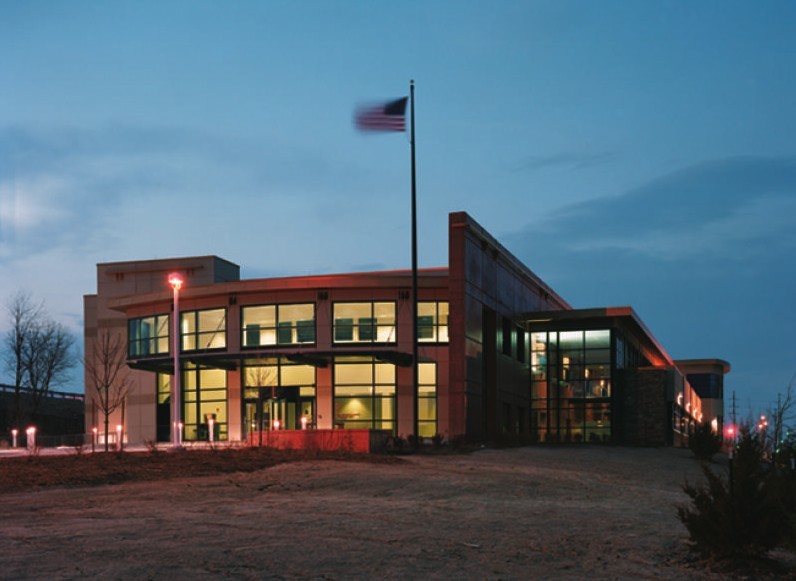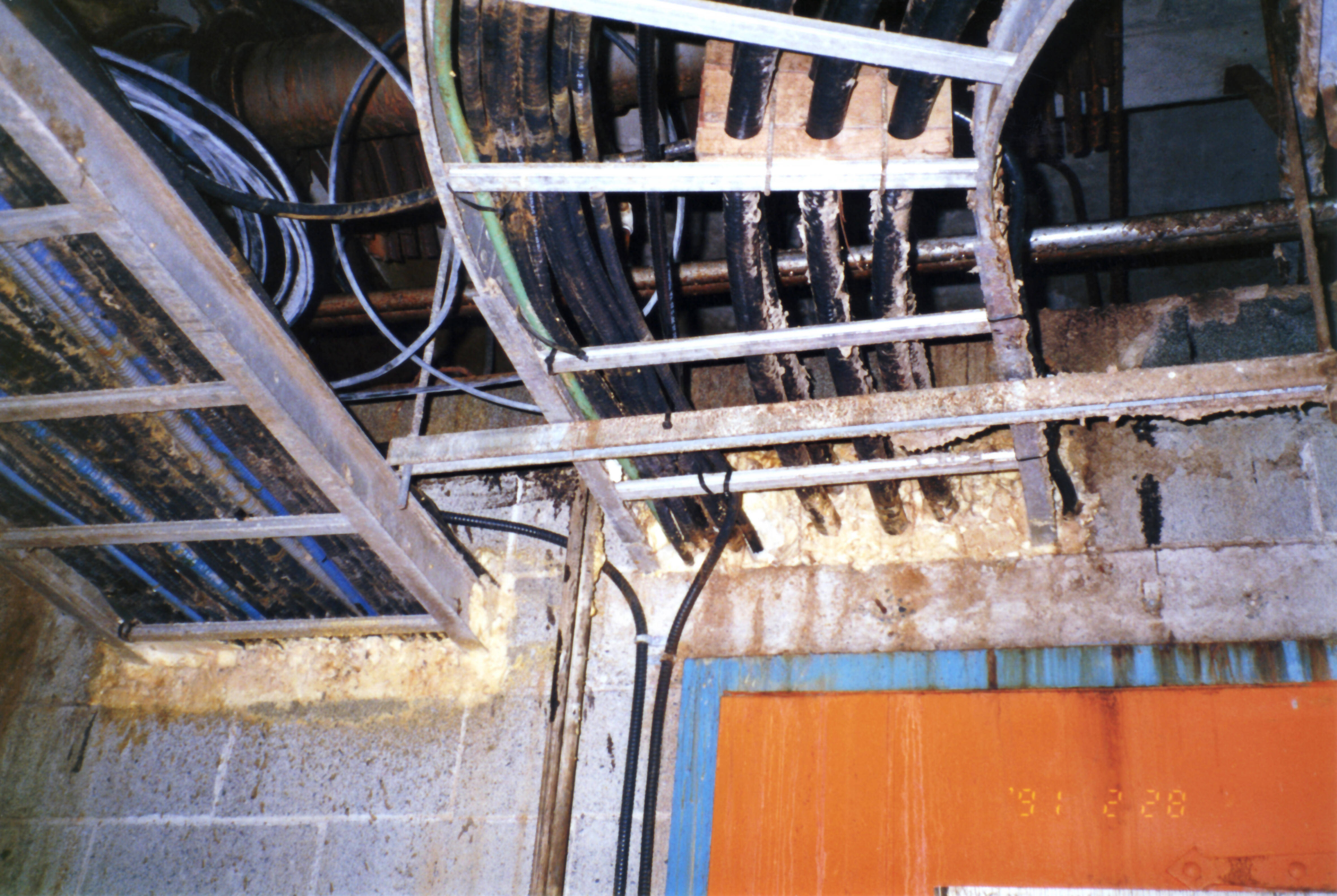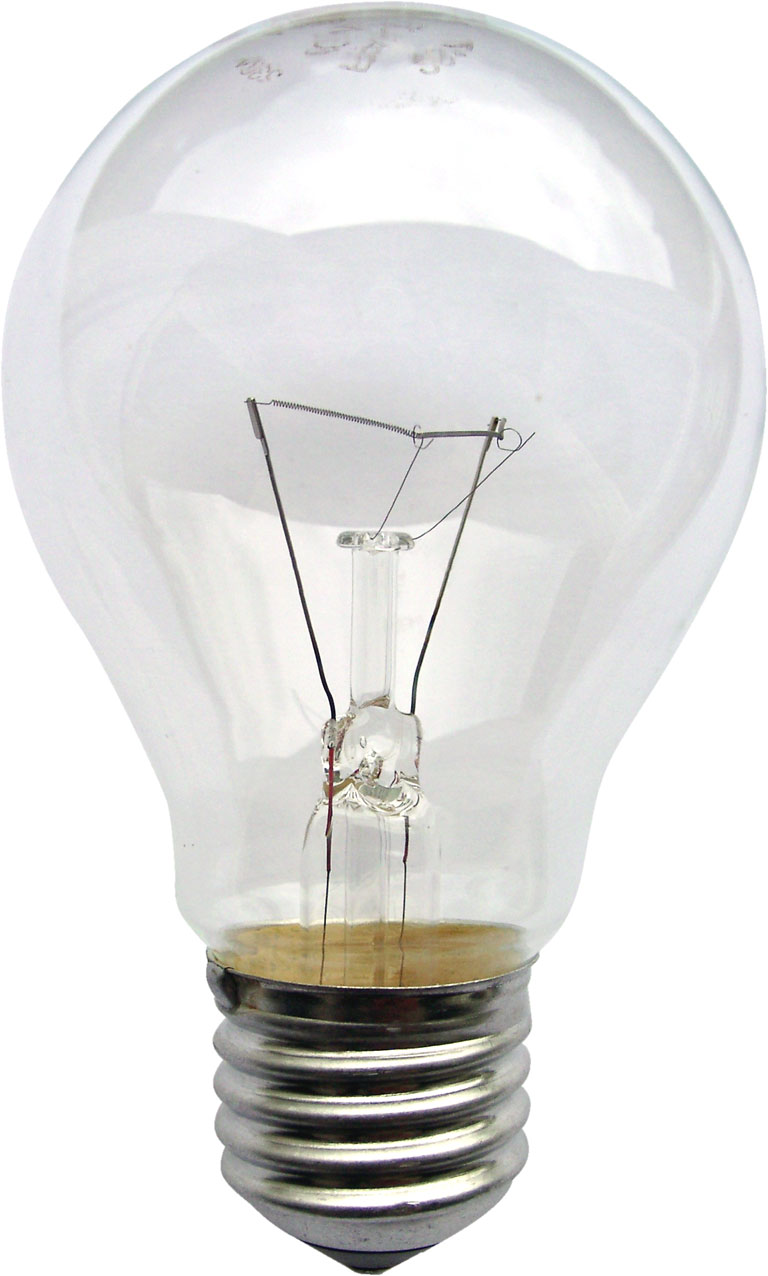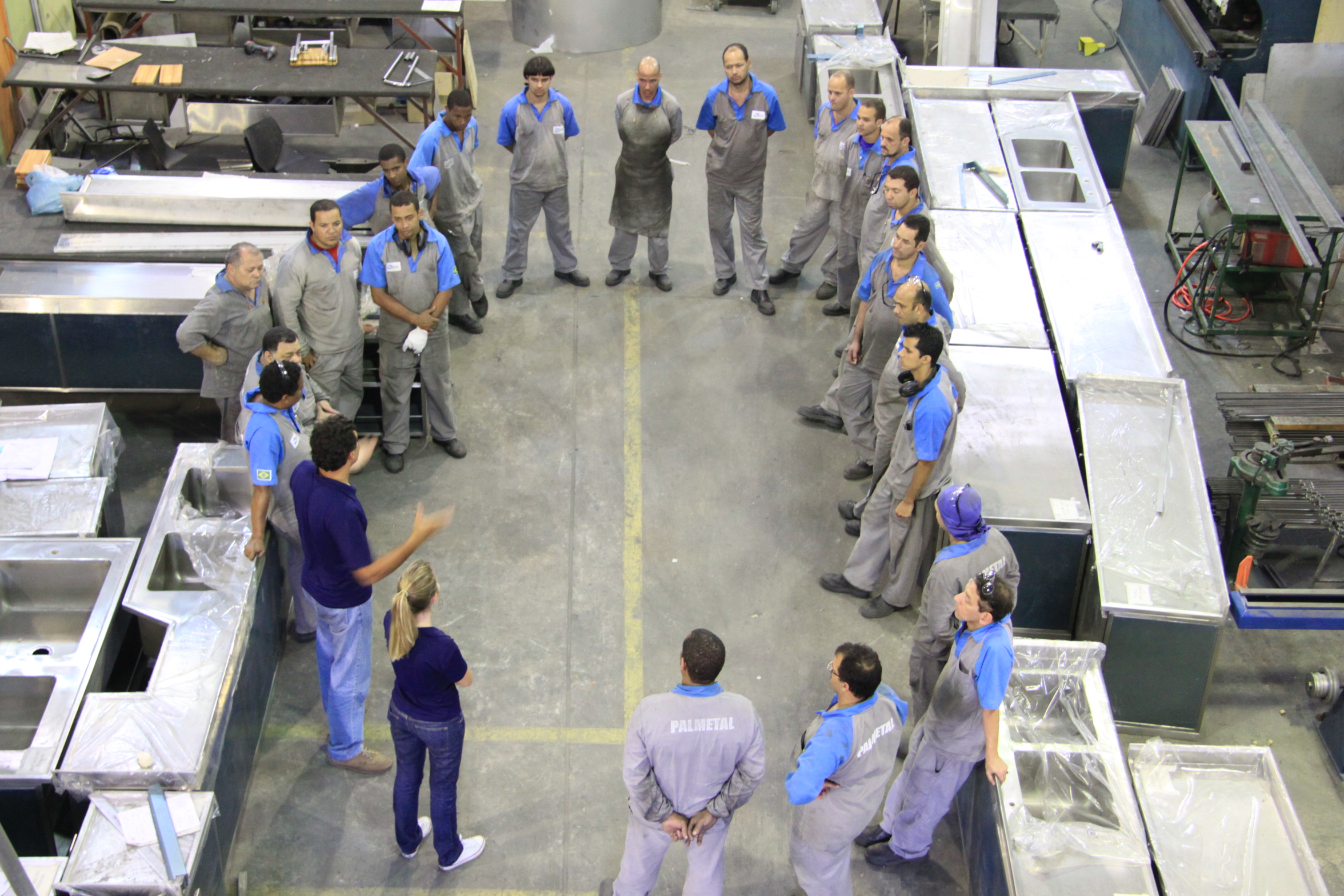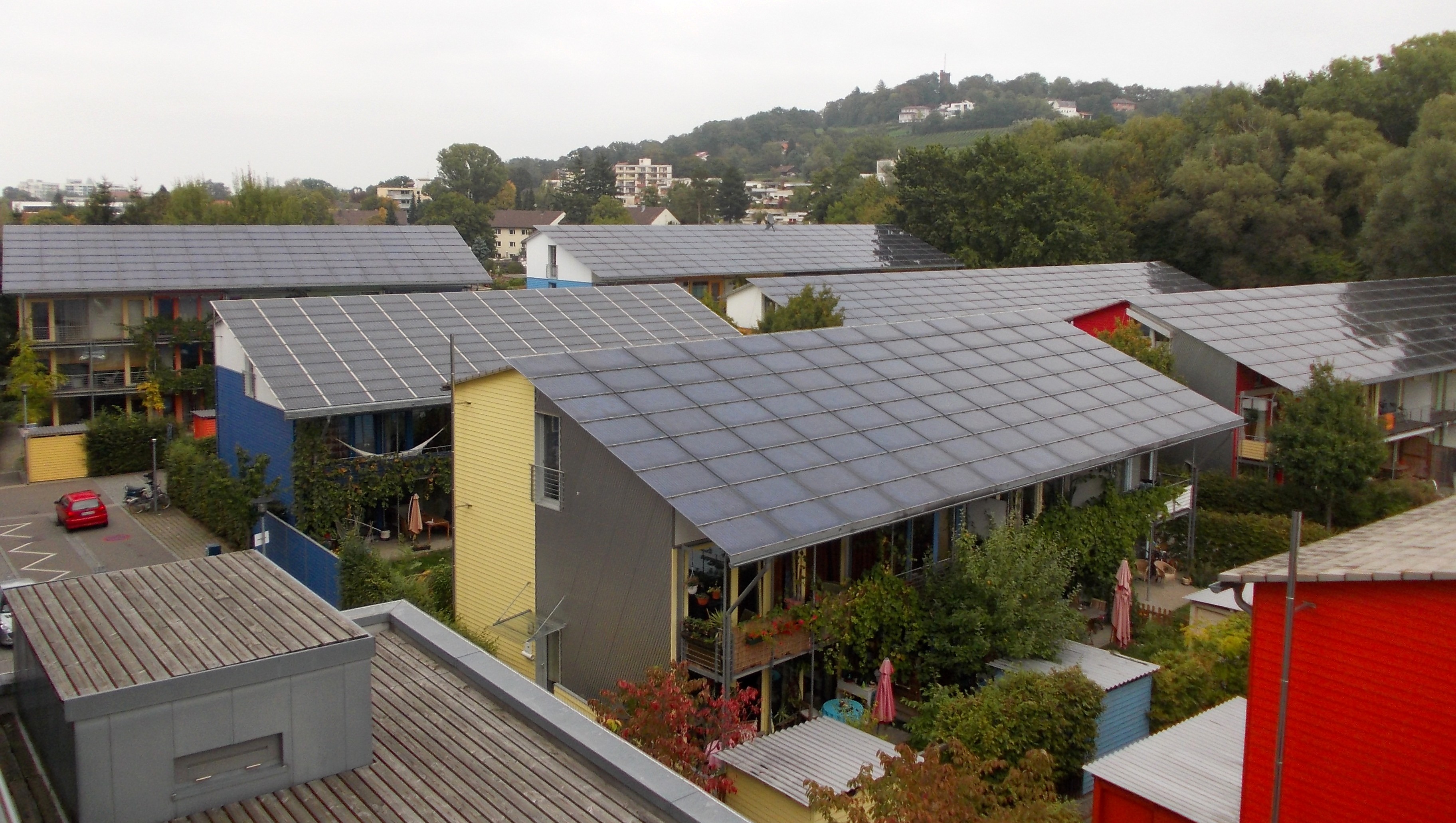|
GreenRight Certified
GreenRight Certified (GreenRighting) is a certification program rewarding commercial and industrial green buildings that meet a defined set of energy efficiency standards relating to lighting equipment, lighting systems, lighting power density (LPD), and associated building code compliance. Developed by CandleRay, the GreenRight Certification is intended to provide business and facility owners with a simple framework for implementing energy conservation through highly efficient, innovative, and more practical lighting systems. This platform is intended to ultimately streamline the adoption of more energy efficient technology, while also helping businesses improve cash flow over time. A before and after audit process determines the lighting power density (LPD) and the decrease in total facility electric load as it applies to the lighting system. The audit provides various improvements designed to qualify the facility for GreenRight Certification. Process *Review of Current Syste ... [...More Info...] [...Related Items...] OR: [Wikipedia] [Google] [Baidu] |
Green Building
Green building (also known as green construction, sustainable building, or eco-friendly building) refers to both a structure and the application of processes that are environmentally responsible and resource-efficient throughout a building's life-cycle: from planning to design, construction, operation, maintenance, renovation, and demolition. This requires close cooperation of the contractor, the architects, the engineers, and the client at all project stages.Yan Ji and Stellios Plainiotis (2006): Design for Sustainability. Beijing: China Architecture and Building Press. The Green Building practice expands and complements the classical building design concerns of economy, utility, durability, and comfort. Green building also refers to saving resources to the maximum extent, including energy saving, land saving, water saving, material saving, etc., during the whole life cycle of the building, protecting the environment and reducing pollution, providing people with healthy, comfor ... [...More Info...] [...Related Items...] OR: [Wikipedia] [Google] [Baidu] |
Building Code
A building code (also building control or building regulations) is a set of rules that specify the standards for construction objects such as buildings and non-building structures. Buildings must conform to the code to obtain planning permission, usually from a local council. The main purpose of building codes is to protect public health, safety and general welfare as they relate to the construction and occupancy of buildings and for example, the building codes in many countries require engineers to consider the effects of soil liquefaction in the design of new buildings. The building code becomes law of a particular jurisdiction when formally enacted by the appropriate governmental or private authority. Building codes are generally intended to be applied by architects, engineers, interior designers, constructors and regulators but are also used for various purposes by safety inspectors, environmental scientists, real estate developers, subcontractors, manufacturers of b ... [...More Info...] [...Related Items...] OR: [Wikipedia] [Google] [Baidu] |
Energy Conservation
Energy conservation is the effort to reduce wasteful energy consumption by using fewer energy services. This can be done by using energy more effectively (using less and better sources of energy for continuous service) or changing one's behavior to use less and better source of service (for example, by driving vehicles which consume renewable energy or energy with more efficiency). Energy conservation can be achieved through efficient energy use, which has some advantages, including a reduction in greenhouse gas emissions and a smaller carbon footprint, as well as cost, water, and energy savings. Green engineering practices improve the life cycle of the components of machines which convert energy from one form into another. Energy can be conserved by reducing waste and losses, improving efficiency through technological upgrades, improving operations and maintenance, changing users' behaviors through user profiling or user activities, monitoring appliances, shifting load to o ... [...More Info...] [...Related Items...] OR: [Wikipedia] [Google] [Baidu] |
Lighting Power Density
Lighting Power Density (LPD) is a lighting power requirement defined in North America by the American National Standards Institute (ANSI), American Society of Heating, Refrigerating and Air-Conditioning Engineers (ASHRAE), and the Illuminating Engineering Society of North America (IESNA) Lighting subcommittee. Lighting Power Density technically represents the load of any lighting equipment in any defined area, or the watts per square foot The square foot (; abbreviated sq ft, sf, or ft2; also denoted by '2 and ⏍) is an imperial unit and U.S. customary unit (non- SI, non-metric) of area, used mainly in the United States, Canada, the United Kingdom, Bangladesh, India, Nepal, Pa ... of the lighting equipment. However, in the lighting industry it is often associated with the lighting power allowance (LPA) permitted by the building energy code in question. The Oregon Department of Energy defines lighting power density as "The maximum allowable lighting density permitted by th ... [...More Info...] [...Related Items...] OR: [Wikipedia] [Google] [Baidu] |
Electric Load
An electrical load is an electrical component or portion of a circuit that consumes (active) electric power, such as electrical appliances and lights inside the home. The term may also refer to the power consumed by a circuit. This is opposed to a power supply source, such as a battery or generator, which ''provides'' power. The term is used more broadly in electronics for a device connected to a signal source, whether or not it consumes power. If an electric circuit has an output port, a pair of terminals that produces an electrical signal, the circuit connected to this terminal (or its input impedance) is the ''load''. For example, if a CD player is connected to an amplifier, the CD player is the source, and the amplifier is the load, and to continue the concept, if loudspeakers are connected to that amplifier, then that amplifier becomes a new, second source (to the loudspeakers), and the loudspeakers will be the load for the amplifier (but not for the CD player, there a ... [...More Info...] [...Related Items...] OR: [Wikipedia] [Google] [Baidu] |
Leadership In Energy And Environmental Design
Leadership in Energy and Environmental Design (LEED) is a Green building certification systems, green building certification program used worldwide. Developed by the non-profit U.S. Green Building Council (USGBC), it includes a set of rating systems for the design, construction, operation, and maintenance of green buildings, homes, and neighborhoods, which aims to help building owners and operators be environmentally responsible and use resources efficiently. there were over 195,000 LEED-certified buildings and over 205,000 LEED-accredited professionals in 186 countries worldwide. In the US, the District of Columbia consistently leads in LEED-certified square footage per capita, followed in 2022 by the top-ranking states of Massachusetts, Illinois, New York, California, and Maryland. Outside the United States, the top-ranking countries for 2022 were Mainland China, India, Canada, Brazil, and Sweden. LEED Canada has developed a separate rating system adapted to the Canadian c ... [...More Info...] [...Related Items...] OR: [Wikipedia] [Google] [Baidu] |
ASHRAE
The American Society of Heating, Refrigerating and Air-Conditioning Engineers (ASHRAE ) is an American professional association seeking to advance heating, ventilation, air conditioning and refrigeration (HVAC&R) systems design and construction. ASHRAE has over 50,000 members in more than 130 countries worldwide. ASHRAE's members comprise building services engineers, architects, mechanical contractors, building owners, equipment manufacturers' employees, and others concerned with the design and construction of HVAC&R systems in buildings. The society funds research projects, offers continuing education programs, and develops and publishes technical standards to improve building services engineering, energy efficiency, indoor air quality, and sustainable development. History ASHRAE was founded in 1894 at a meeting of engineers in New York City, formerly headquartered at 345 East 47th Street (the United Engineering Center), and has held an annual meeting since 1895. Until ... [...More Info...] [...Related Items...] OR: [Wikipedia] [Google] [Baidu] |
Energy Conservation
Energy conservation is the effort to reduce wasteful energy consumption by using fewer energy services. This can be done by using energy more effectively (using less and better sources of energy for continuous service) or changing one's behavior to use less and better source of service (for example, by driving vehicles which consume renewable energy or energy with more efficiency). Energy conservation can be achieved through efficient energy use, which has some advantages, including a reduction in greenhouse gas emissions and a smaller carbon footprint, as well as cost, water, and energy savings. Green engineering practices improve the life cycle of the components of machines which convert energy from one form into another. Energy can be conserved by reducing waste and losses, improving efficiency through technological upgrades, improving operations and maintenance, changing users' behaviors through user profiling or user activities, monitoring appliances, shifting load to o ... [...More Info...] [...Related Items...] OR: [Wikipedia] [Google] [Baidu] |
Energy Independence And Security Act Of 2007
The Energy Independence and Security Act of 2007Pub.L. 110-140, originally named the Clean Energy Act of 2007, is an Act of Congress concerning the energy policy of the United States. As part of the United States Democratic Party, Democratic Party's 100-Hour Plan during the 110th United States Congress, 110th Congress, it was introduced in the United States House of Representatives by Representative Nick Rahall of West Virginia, along with 198 cosponsors. Even though Rahall was 1 of only 4 Democrats to oppose the final bill, it passed in the House without amendment in January 2007. When the Act was introduced in the United States Senate, Senate in June 2007, it was combined with Senate Bill S. 1419: ''Renewable Fuels, Consumer Protection, and Energy Efficiency Act of 2007''. This amended version passed the Senate on June 21, 2007. After further amendments and negotiation between the House and Senate, a revised bill passed both houses on December 18, 2007 and President George W. ... [...More Info...] [...Related Items...] OR: [Wikipedia] [Google] [Baidu] |
Environmental Design
Environmental design is the process of addressing surrounding environmental parameters when devising plans, programs, policies, buildings, or products. It seeks to create spaces that will enhance the natural, social, cultural and physical environment of particular areas. Classical prudent design may have always considered environmental factors; however, the environmental movement beginning in the 1940s has made the concept more explicit. Environmental design can also refer to the applied arts and sciences dealing with creating the human-designed environment. These fields include architecture, geography, urban planning, landscape architecture, and interior design. Environmental design can also encompass interdisciplinary areas such as historical preservation and lighting design. In terms of a larger scope, environmental design has implications for the industrial design of products: innovative automobiles, wind power generators, solar-powered equipment, and other kinds of equipment ... [...More Info...] [...Related Items...] OR: [Wikipedia] [Google] [Baidu] |
High-Performance Green Buildings
High-performance buildings are those which deliver a relatively higher level of energy efficiency performance or greenhouse gas reduction than what is required by building codes or other regulations. Architects, designers, and builders typically design and build high-performance buildings using a range of established strategies, techniques, tools, and materials to ensure that, upon completion, the building will consume a minimal amount of energy for heating, cooling, illumination, and ventilation during operation. Occupant benefits Those living or working in high-performance buildings enjoy a range of benefits when compared with traditional, less-efficient buildings. Documented benefits include: * Lower energy bills. Lower energy consumption reduces operating costs and helps shield owners or managers from future increases in energy prices. * Healthier living. High performance homes are designed for improved indoor air quality. They often include active ventilation, and use mater ... [...More Info...] [...Related Items...] OR: [Wikipedia] [Google] [Baidu] |
Sustainable Architecture
Sustainable architecture is architecture that seeks to minimize the negative environmental impact of buildings through improved efficiency and moderation in the use of materials, energy, development space and the ecosystem at large. Sometimes, sustainable architecture will also focus on the social aspect of sustainability as well. Sustainable architecture uses a conscious approach to energy and ecological conservation in the design of the built environment. The idea of sustainability, or ecological design, is to ensure that use of currently available resources does not end up having detrimental effects to a future society's well-being or making it impossible to obtain resources for other applications in the long run. Background Shift from narrow to broader approach The term "sustainability" in relation to architecture has so far been mostly considered through the lens of building technology and its transformations. Going beyond the technical sphere of "green design", inventi ... [...More Info...] [...Related Items...] OR: [Wikipedia] [Google] [Baidu] |
